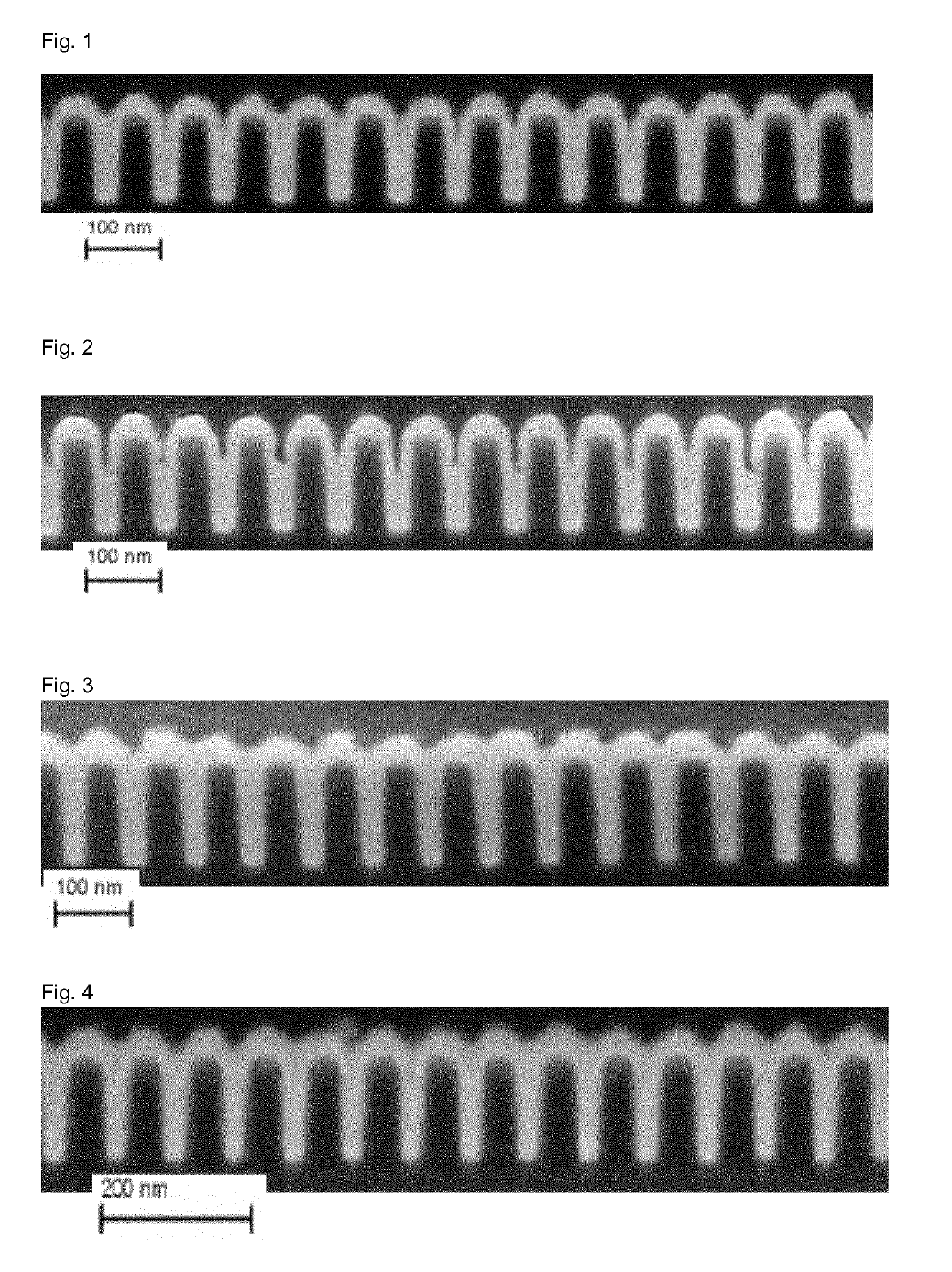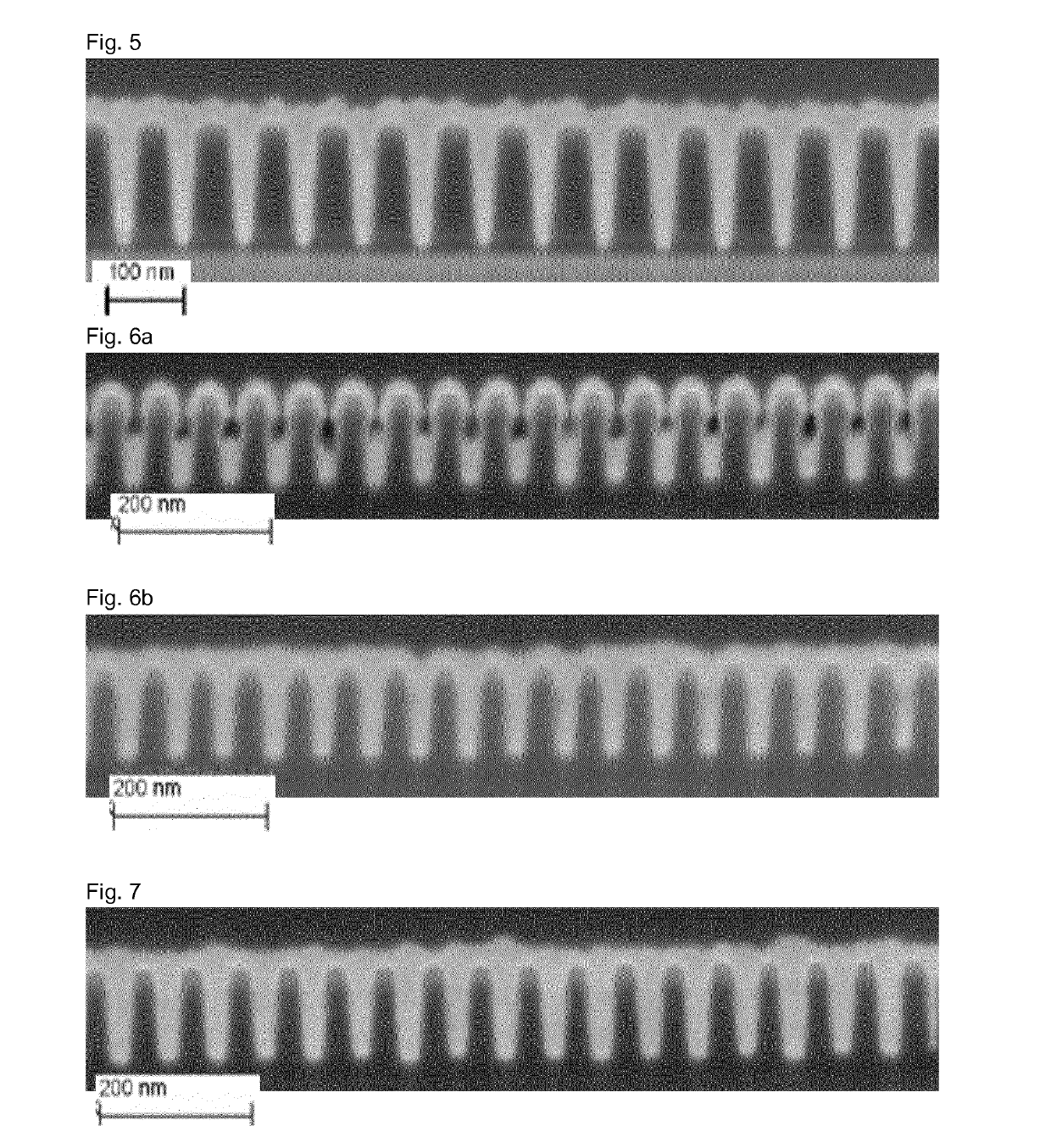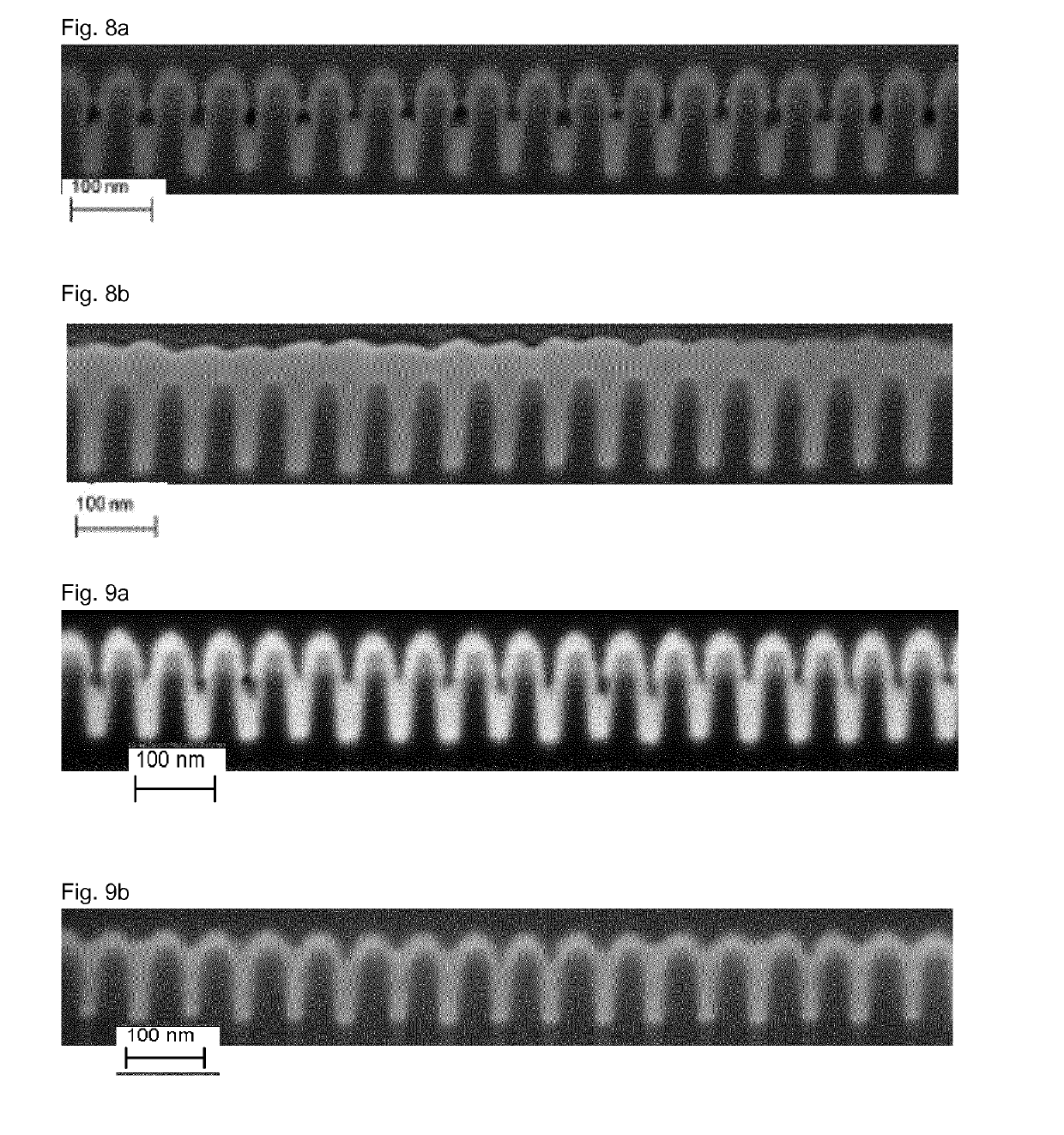Composition for metal plating comprising suppressing agent for void free filing
a technology of suppressing agent and metal plating, which is applied in the direction of basic electric elements, electrical apparatus, and semiconductor devices, can solve the problems of lead-free solder plating, particularly at the top of the aperture, etc., and achieves high aspect ratio, small aperture size, and superfilling properties. extraordinary
- Summary
- Abstract
- Description
- Claims
- Application Information
AI Technical Summary
Benefits of technology
Problems solved by technology
Method used
Image
Examples
examples
[0189]Several suppressors have been synthesized by polyalkoxylation of the respective amine or alcohol starters.
example a
of Suppressors
Example A1: Synthesis of Suppressor 1
[0190]Glycerine (30 g) and potassium tert-butoxide (5.5 g) were placed into a 500 mL four-necked flask under nitrogen atmosphere and heated up to 160° C. Then glycerine carbonate (346.2 g) was added over a period of 45 min. The mixture was allowed to post react for 5 h. A dark brown viscous intermediate product (246.9 g) was obtained. Subsequently the intermediate product (87.5 g) and potassium tert-butoxide (0.6 g) were placed into a 3.5 l autoclave. After nitrogen neutralization the pressure was adjusted to 1.0 bar and the mixture was homogenized at 130° C. for 1 h. Then propylene oxide (576.2 g) and ethylene oxide (247.2 g) were added at 130° C. over a period of 4 h, reaching a maximum pressure of 7 bar. To complete the reaction, the mixture was allowed to post-react for 15 h at 130° C. at a pressure of 7 bar. Then, the temperature was decreased to 80° C. and volatile compounds were removed in vacuum at 80° C.
[0191]Suppressor 1 w...
example a2
of Suppressor 2
[0192]Trispentaerythritol (60 g) dissolved in Xylol and potassium tert-butoxide (0.6 g) were placed into a 3.5 l autoclave. After nitrogen neutralization the pressure was adjusted to 1.0 bar and the mixture was homogenized at 130° C. for 1 h. Then propylene oxide (403.5 g) and ethylene oxide (173.2 g) were added at 130° C. over a period of 4 h, reaching a maximum pressure of 7 bar. To complete the reaction, the mixture was allowed to post-react for 15 h at 130° C. at a pressure of 7 bar. Then, the temperature was decreased to 80° C. and volatile compounds were removed in vacuum at 80° C. A viscous yellowish product A (633.3 g) was obtained.
[0193]The intermediate product A (300 g) and potassium tert-butoxide (0.6 g) were placed into a 1000 mL four-necked flask under nitrogen atmosphere and heated up to 160° C. Then glycerine carbonate (71.7 g) was added over a period of 30 min. The mixture was allowed to post react for 20 h. A beige-coloured intermediate product B (342...
PUM
| Property | Measurement | Unit |
|---|---|---|
| size | aaaaa | aaaaa |
| size | aaaaa | aaaaa |
| aperture sizes | aaaaa | aaaaa |
Abstract
Description
Claims
Application Information
 Login to View More
Login to View More - R&D
- Intellectual Property
- Life Sciences
- Materials
- Tech Scout
- Unparalleled Data Quality
- Higher Quality Content
- 60% Fewer Hallucinations
Browse by: Latest US Patents, China's latest patents, Technical Efficacy Thesaurus, Application Domain, Technology Topic, Popular Technical Reports.
© 2025 PatSnap. All rights reserved.Legal|Privacy policy|Modern Slavery Act Transparency Statement|Sitemap|About US| Contact US: help@patsnap.com



